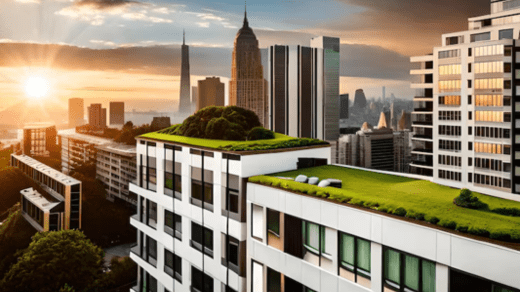
The structural integrity of a commercial property is very important for its long-term practicality, safety, and monetary value. Durability not only ensures that buildings can stand the test of time but also reduces maintenance costs to a minimum and helps create secure living and working conditions for people.
In this article, we will look at the key points that will enable you as an owner of any commercial property to have a structure that would practically be durable, from the beginning phase to conducting regular inspections, maintenance, and construction.
1. Invest in Quality Construction Materials
The quality of materials with which an enduring structure is erected is the major factor determining its strength. Always be conscious about using high-grade materials that are known for their lifespan, endurance, and self-sufficiency.
They prove superior at withstanding the challenges of nature. Pick the correct materials that will be suitable within the unique circumstances of your property for example weather resistant roofs, metal products that will not rust, strong commercial concrete flooring, or walls for structural elements. The use of materials that will wear out fast should be a thing of the past, and one should spend on the best materials.
2. Work with Experienced Architects and Engineers
The design and build of the commercial property have vital importance for its structural strength. Collaborate with architects and engineers who have a winning history in the area of design and on-site project execution that match the minimum industry standards for structural soundness and safety.
Stay in close touch with the design team to guarantee that designed structural elements (such as a foundation, lvp flooring installation, framing, and load-bearing walls) can withstand certain anticipated loads, stresses, and weather conditions.
3. Regular Maintenance and Inspections
You cannot function effectively without including inspection programs. Such programs enable us to identify the onset of problems early and prevent them from turning into situations that could attack the structural health of your business premises.
Introduce a preventive maintenance plan with daily checks of all structural components – roofing, HVAC systems, plumbing, electrical systems, and others – to be used for cases that need urgent attention. Repair any damage, loss of integrity, or fatigue of the element quickly to avoid the collapse of the structure in the due course of time.
4. Reinforce Vulnerable Areas
Scan out the potential areas in your commercial property that might be exposed to the risk of structural damage or failure but do not specifically depend on the safety of the property in case of floods, seismic activity, or high wind. Focus on the reinforcement of these tangible elements as they play an augmented role in the building’s durability and resistance.
You would need to add some two-step lumber, pinning, waterproofing, or other related measures to avoid certain hazards and keep your property’s structural elements in good working condition for a longer period.
5. Stay Up to Date with Building Codes and Regulations
Be informed regarding the latest local building codes, zoning regulations, and industry standards to achieve a commercial property that not only meets the minimum requirements for structural durability and safety, but goes beyond that. For the property you are developing, make sure you are working with experienced, competent professionals who are aware of building codes and regulations.
